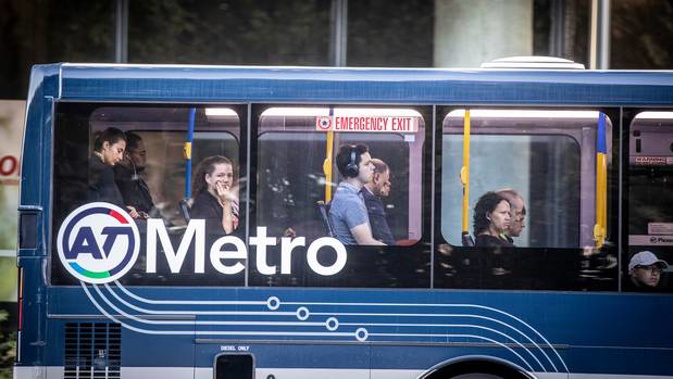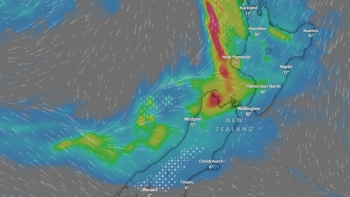
Public transport fares in Auckland are about to rise again.
A 6.2 per cent increase for bus, train and ferry rides was approved by the board of Auckland Transport (AT), to take effect from February 4 next year.
The fares rise follows the 6.5 per cent rise introduced early this year.
The board also heard that deaths and serious injuries on Auckland roads have risen slightly overall, but very steeply among motorcyclists. There were 400 per cent more serious crashes involving motorcyclists in the last year.
The fare increase means an adult single-zone fare with a HOP card on a bus or train will rise by 23 cents, from $2.37 to $2.60.
A two-zone fare will rise by 25 cents, from $4.20 to $4.45 and a three-zone fare will rise by 20 cents, from $5.80 to $6.00.
Children will still ride for free.
The youth rate, which applies from ages 13 to 15, will rise by 8 cents for one zone, 9 cents for two zones and 10 cents for three zones.
The new fare proposal was presented to the board by Stacey Van Der Putten, AT’s executive general manager of public transport and safety.
She said the new fares will mean passengers pay 26 per cent of the total cost of the services. This is known as the “farebox recovery” rate.
Currently, the farebox recovery rate is 25 per cent.
Board chairman Mark Darrow asked Van Der Putten about the relationship between fares and passenger numbers. “The other way for us to increase revenue is to get more people on the buses. Can you give us an assurance you’re optimising the balance between fares and customers?”
Van Der Putten assured him they were.
/cloudfront-ap-southeast-2.images.arcpublishing.com/nzme/LXMKTUXYAJGD5FRAZH6HKKQQFU.jpg)
Auckland Transport chairman Mark Darrow (left) and deputy chairman Wayne Donnelly. Photo / Michael Craig
Board member Nicole Rosie, who is also the chief executive of Waka Kotahi, the Governent’s Transport Agency, raised the same issue.
“It seems to me a fundamental problem for Auckland is there are not enough public transport services. So how do we get more revenue to increase number of services? We need to have a discussion on the tradeoff between fares and services.”
Van Der Putten explained that a “full review” of this was under way and would be presented in April or May next year.
Board member Chris Darby, who is also a city councillor, said he hoped the review would recognise that “one of the fundamental objectives is equity”.
Van Der Putten said it would. She also noted that the new Government “has signalled the removal of discounts for youth and children”.
Rosie suggested the fares, even with the increase, are low.
“From our point of view this is very light. It’s well below the cost of running the services and below what others do overseas.”
Darrow agreed that 26 per cent farebox recovery seems low internationally.
Van Der Putten said, “It depends where you look and how they do it. In some cities it’s under 10 per cent.”
The board also heard from Van Der Putten about crash rates in the city over the year to October 2023.
The number of death and serious injuries on Auckland roads rose by 4 per cent, from 640 to 647. Nearly half of them (46 per cent) were to “vulnerable road users”, which includes motorcyclists, pedestrians and cyclists.
Motorcyclist deaths rose 400 per cent, from four to 15. Serious injuries to cyclists rose 26 per cent, from 35 to 44.
“Motorcyclists are 45 times more likely to die in a crash than a vehicle occupant,” said Van Der Putten. “And they are 164 times more likely to be hospitalised.”
/cloudfront-ap-southeast-2.images.arcpublishing.com/nzme/IVDPMLVZR7JIEP2LEGVA4TJZZU.jpg)
Motorcylists are 164 times more likely than vehicle occupants to be hospitalised after a crash, and the cause is commonly drivers not seeing them when they turn. Photo / Hayden Woodward
Nicole Rosie told the AT board these rates for motorcyclists were above the national average. She wondered if they were related to Auckland’s “growth in migrant numbers and unfamiliarity with local roads”.
Van Der Putten said that didn’t seem to be the case. “Many of the crashes involve a turning event,” she said. “That probably means a vehicle driver doesn’t see the motorbike and turns into them.”
She late explained to the Herald that the number of motorbikes on Auckland roads surged in 2021, following the Covid lockdowns.
“The spike in crashes comes between 3pm and 6pm,” she said.
The Herald asked, “Does this mean the problem is angry drivers at the end of the day?”
She said that seems to be a contributing factor.
AT board member and Waka Kotahi chief executive Nicole Rosie. Photo / Michael Cunningham
Among all crashes causing death or serious injury, speed was a factor in 68 per cent of cases and alcohol or drugs was involved in 34 per cent.
And deaths to older road users – including pedestrians – were up 275 per cent, from four to 11.
Van Der Putten advised the board that the new Government has said it will overturn the recent reductions in speed limits “where it is safe to do so”.
“And of course we look forward to working with them to work out what this will mean.”
Simon Wilson is a senior writer covering politics, the climate crisis, transport, housing, urban design and social issues, with a focus on Auckland. He joined the Herald in 2018.
Take your Radio, Podcasts and Music with you

/cloudfront-ap-southeast-2.images.arcpublishing.com/nzme/P6UFB5Z4PVFXRLE2SQ46DFVVUY.JPG)








